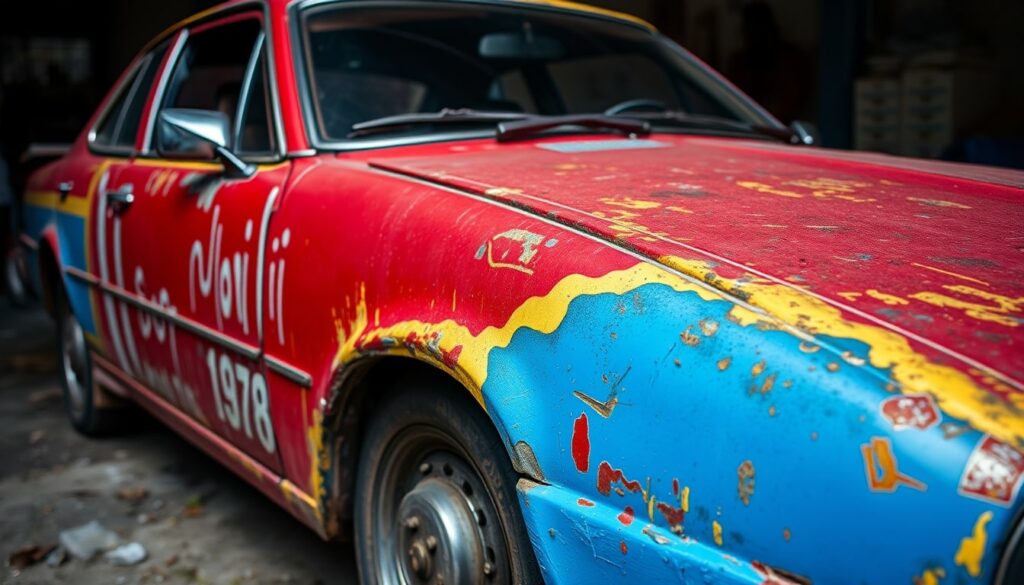Car wrapping is a popular alternative to traditional paint jobs, offering flexibility, protection, and endless customization possibilities. But many people wonder, can you wrap a car with bad paint? The short answer is yes, you can, but there are important factors to consider. Wrapping a car with damaged paint involves more risk and potential complications than wrapping a car with a pristine surface. In this article, we will explore the challenges of wrapping a car with bad paint, the benefits, and the steps you need to take to ensure a successful vehicle wrap.
Understanding the Basics of Car Wrapping
Before diving into whether you can wrap a car with bad paint, it’s essential to understand what car wrapping involves. A vinyl wrap is a thin, flexible material applied to the surface of a car. This vehicle wrap can come in various colors, textures, and finishes, allowing car owners to personalize their vehicle without the permanence of a new paint job.
Vinyl wraps are designed to protect the original paint while also providing a new aesthetic. But what happens when the car’s original paint is already damaged? This is where the question can you wrap a car with bad paint comes into play.
Can You Wrap a Car with Bad Paint?

The question, can you wrap a car with bad paint, arises frequently for those with scratched, peeling, or faded paint. The answer depends on the extent and type of paint damage. While you can wrap a car with bad paint, the success of the vinyl wrap depends on the surface quality and how well you prepare the vehicle.
Factors That Affect Wrapping a Car with Bad Paint
When considering whether you can wrap a car with bad paint, it’s essential to evaluate the type of damage your paint has sustained. Here are some common paint issues and how they affect the wrapping process:
- Faded Paint: If your paint is just faded and lacks luster but still intact, a vinyl wrap can adhere well. You can still wrap a car with faded paint without major issues, but the longevity of the wrap may be reduced.
- Peeling Paint: Peeling paint is a bigger concern. If your paint is peeling or flaking, the vinyl wrap may not adhere correctly to these areas, leading to bubbling, lifting, and premature failure of the vehicle wrap. In cases of peeling paint, it is recommended to sand down or repair the damaged areas before wrapping.
- Chipped or Scratched Paint: Small chips and scratches are usually not a deal-breaker when determining whether you can wrap a car with bad paint. However, these imperfections can show through the wrap if they are deep or large. It is advisable to fill in deep scratches or chips before applying a vinyl wrap to ensure a smooth surface.
- Rust: Wrapping over rust is highly discouraged. Vinyl wrap cannot adhere to rust properly, and the wrap may trap moisture, worsening the rust over time. Rust should be removed and treated before applying any vehicle wrap.
Risks of Wrapping a Car with Bad Paint
While you can wrap a car with bad paint, there are some risks involved. These risks include:
- Adhesion Issues: As mentioned earlier, peeling or flaking paint can prevent the vinyl wrap from adhering correctly. This can lead to premature lifting and bubbles in the wrap.
- Paint Damage During Removal: If the underlying paint is already compromised, removing the vehicle wrap later may cause more damage. The wrap’s adhesive could pull up weak or peeling paint, leaving bare patches or exposing primer.
- Aesthetic Problems: Bad paint may affect the final appearance of the vinyl wrap. Deep scratches, chips, or uneven surfaces may show through the wrap, giving it an unprofessional look.
How to Prepare a Car with Bad Paint for Wrapping

If you decide that you want to wrap a car with bad paint, preparation is key to ensuring the best outcome. Proper preparation can help minimize the risks and improve the adhesion of the vehicle wrap. Here are the steps to prepare a car with bad paint for wrapping:
Step 1: Clean the Surface Thoroughly
Before applying a vinyl wrap, you must clean the vehicle’s surface thoroughly. Dirt, dust, and oil can interfere with the wrap’s adhesion. Use a mild detergent and a microfiber cloth to clean the surface. For stubborn grime or grease, use isopropyl alcohol.
Step 2: Repair Paint Damage
If your car has peeling, flaking, or deep scratches, you should repair these areas before applying a vehicle wrap. Sand down peeling or flaking paint to create a smooth surface. You can also use automotive body filler to fill in any deep scratches or chips. Ensuring the surface is smooth will improve the wrap’s final appearance.
Step 3: Sand and Smooth the Surface
For severely damaged areas, sanding is essential. Sanding the surface smooths out imperfections, making it easier for the vinyl wrap to adhere evenly. After sanding, clean the surface again to remove any dust or debris.
Step 4: Prime the Surface (If Necessary)
In some cases, priming the surface before applying a vehicle wrap is recommended. Priming improves adhesion and provides a smooth, even surface. This step is particularly useful when you wrap a car with bad paint that has undergone significant repairs.
Choosing the Right Vinyl Wrap for a Car with Bad Paint

When deciding whether you can wrap a car with bad paint, it’s crucial to choose the right type of vinyl wrap. High-quality wraps are more durable and have better adhesive properties, making them more forgiving on cars with paint issues. Consider investing in a thicker, premium vehicle wrap that can hide minor imperfections.
Additionally, matte or textured finishes may do a better job of concealing flaws than gloss wraps. A vinyl wrap with a matte finish can minimize the appearance of minor scratches or chips, giving your vehicle a more polished look.
Professional Help for Wrapping a Car with Bad Paint
While you can wrap a car with bad paint yourself, it’s often best to seek professional help, especially if the damage is significant. Professional installers have the experience and tools needed to repair paint issues and apply a vehicle wrap with precision. They can also advise you on whether your paint damage will affect the wrap’s durability and appearance.
Professional installers may offer services such as paint touch-ups, sanding, and priming before applying the vinyl wrap. These additional services can help ensure that your vehicle wrap looks smooth and lasts for years to come.
Can You Wrap a Car with Bad Paint? The Verdict
So, can you wrap a car with bad paint? The answer is yes, but with caution. While minor paint imperfections may not affect the outcome, more severe issues such as peeling or rust should be addressed before applying a vinyl wrap. Proper preparation and choosing the right vehicle wrap can help ensure a smooth, long-lasting finish. However, keep in mind that wrapping a car with bad paint involves some risks, including potential damage during wrap removal.
If you’re unsure whether you can wrap a car with bad paint or how to address your vehicle’s specific paint issues, consult with a professional car wrapping service. They can guide you through the process, from paint repair to wrap application, ensuring that your vinyl wrap looks great and protects your car’s surface for years to come.




Pingback: How Long Does a Car Vinyl Wrap Last? A Comprehensive Guide - Car Wrap Insights